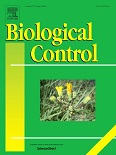Development of a real-time PCR protocol for the specific detection and quantification of Penicillium digitatum in lemons
Dublin Core
Título
Development of a real-time PCR protocol for the specific detection and quantification of Penicillium digitatum in lemons
Tema
CANDIDA
CONTROL BIOLOGICO
LIMONES
BIBLIOGRAFIA NACIONAL QUIMICA
2023
Abstract
Penicillium digitatum is the main species responsible for postharvest losses in citrus fruit and, therefore, rapid and accurate methods are needed for its early detection. For this purpose, a new procedure based on real-time quantitative PCR (qPCR) was developed to detect and quantify P. digitatum in lemons. The procedure included a rapid extraction of fungal DNA using the commercial Quick-DNA Fungal/Bacterial Miniprep Kit; the design of a specific primers pair by selecting the conserved region of the calmodulin A (cmdA) gene; and the design and evaluation of a qPCR system based on SYBR-Green dye detection chemistry. The functionality of the developed method was demonstrated by the high linear correlation of the standard curve constructed over the entire range of fungal DNA concentrations used (R2 > 0.99), indicating precision and accuracy of the qPCR. The protocol was developed aiming to evaluate the biotechnological potential of the biocontrol yeast Clavispora lusitaniae AgL21, by quantifying the fungus P. digitatum in lemon wounds. The yeast was shown to restrict the pathogen growth, reaching fungal DNA concentrations of up to 0.038 ng/wound after 4 days of incubation, compared to 173.06 ng/wound when the fungus was alone. No inhibition of qPCR due to food matrices was observed. The developed qPCR protocol could be considered as a suitable tool to detect P. digitatum in food products and can be used to specifically test the ability of new biological control microorganisms against green mold in lemons.
Autor
Pereyra, Martina María
Sineli, Pedro Eugenio
Dib, Julián Rafael
Fuente
Biological Control, v.178, 2023. -- e105146
Editor
Elsevier
Fecha
2023
Derechos
This study compares the performance of Hanseniaspora vineae (Hv) under mixed culture fermentation with Saccharomyces cerevisiae, with a conventional control (Sc) for the production of base wine. Hv exhibited fermentation kinetics comparable to controls when its nutritional requirements were satisfied. Volatile acidity in Hv from one batch was significantly lower (–0.3 g/L) compared to the controls, while in the other two batches the levels were equal. Interestingly, Hv trials showed a significant degradation of malic acid (–0.9 g/L on average) without variations of pH. Even though the matrix influenced the volatile composition, the characteristic features of H. vineae remained intact, with 24-fold higher levels of 2-phenylethyl acetate. There was no higher production of 2-aminoacetophenone, albeit tryptophan (known as a 2-aminoacetophenone precursor) is a preferred amino acid for H. vineae. Results suggest the potential of H. vineae to produce base wine with a broad spectrum of aroma compounds that increase flavor complexity, if obtained from nutrient-balanced grape musts.
Formato
PDF
Extent
7 p.
Idioma
Inglés
Tipo
Artículo
Identificador
10.1016/j.biocontrol.2022.105146
Document Item Type Metadata
Original Format
PDF
- Fecha de agregación
- October 4, 2023
- Colección
- Bibliografía Nacional Química
- Tipo de Elemento
- Document
- Etiquetas
- Cándida, Control biológico, Limones
- Citación
- Pereyra, Martina María, “Development of a real-time PCR protocol for the specific detection and quantification of Penicillium digitatum in lemons,” RIQUIM - Repositorio Institucional de la Facultad de Química - UdelaR, accessed July 26, 2024, https://riquim.fq.edu.uy/items/show/6713.
- Archivos

